AP Human Geography explores the patterns and processes that shape human interaction with the environment. This cheat sheet covers key concepts, including population dynamics, cultural landscapes, political geography, and urban development, offering a quick guide for mastering essential topics.
Free AP Human Geography Practice Test

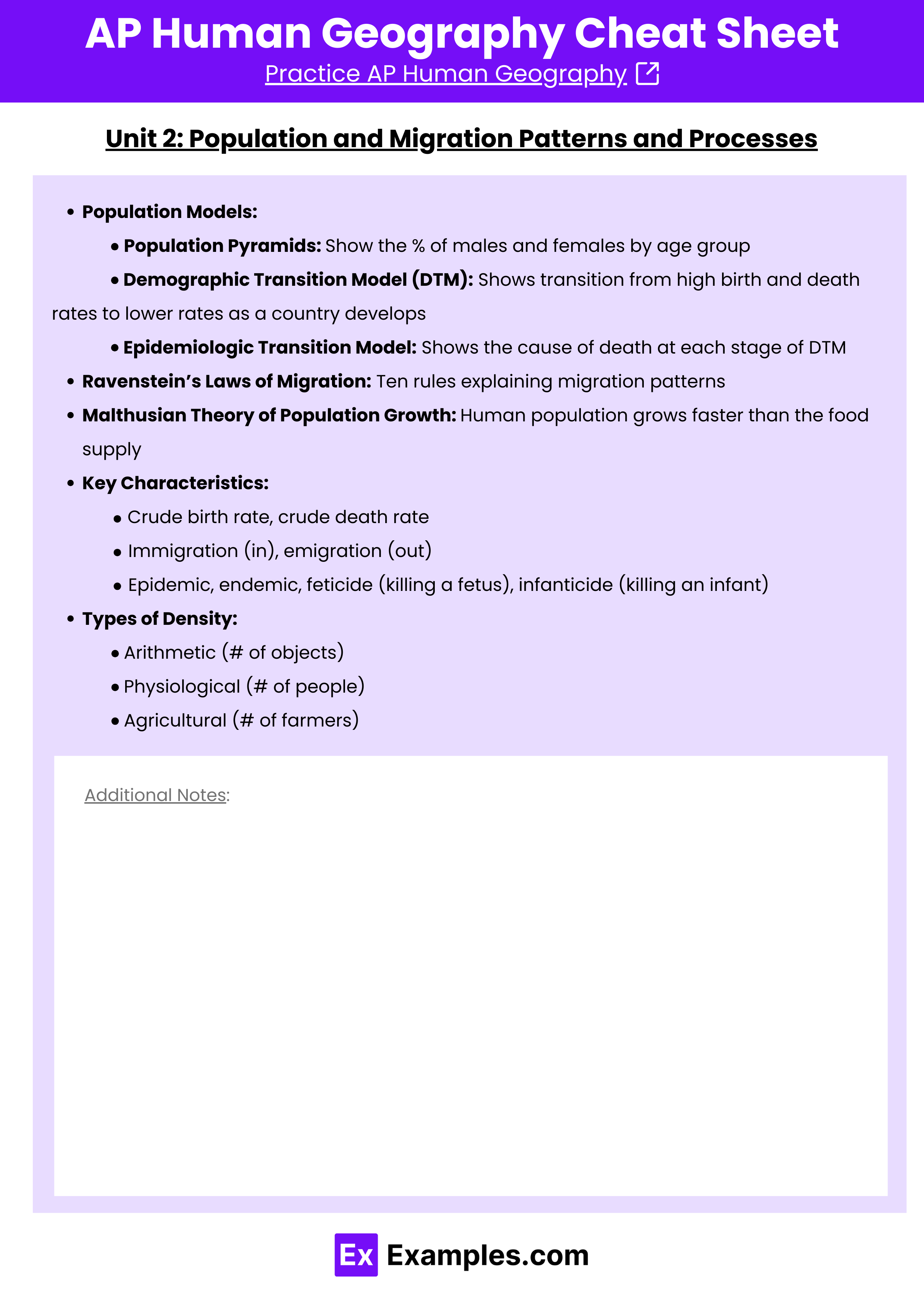

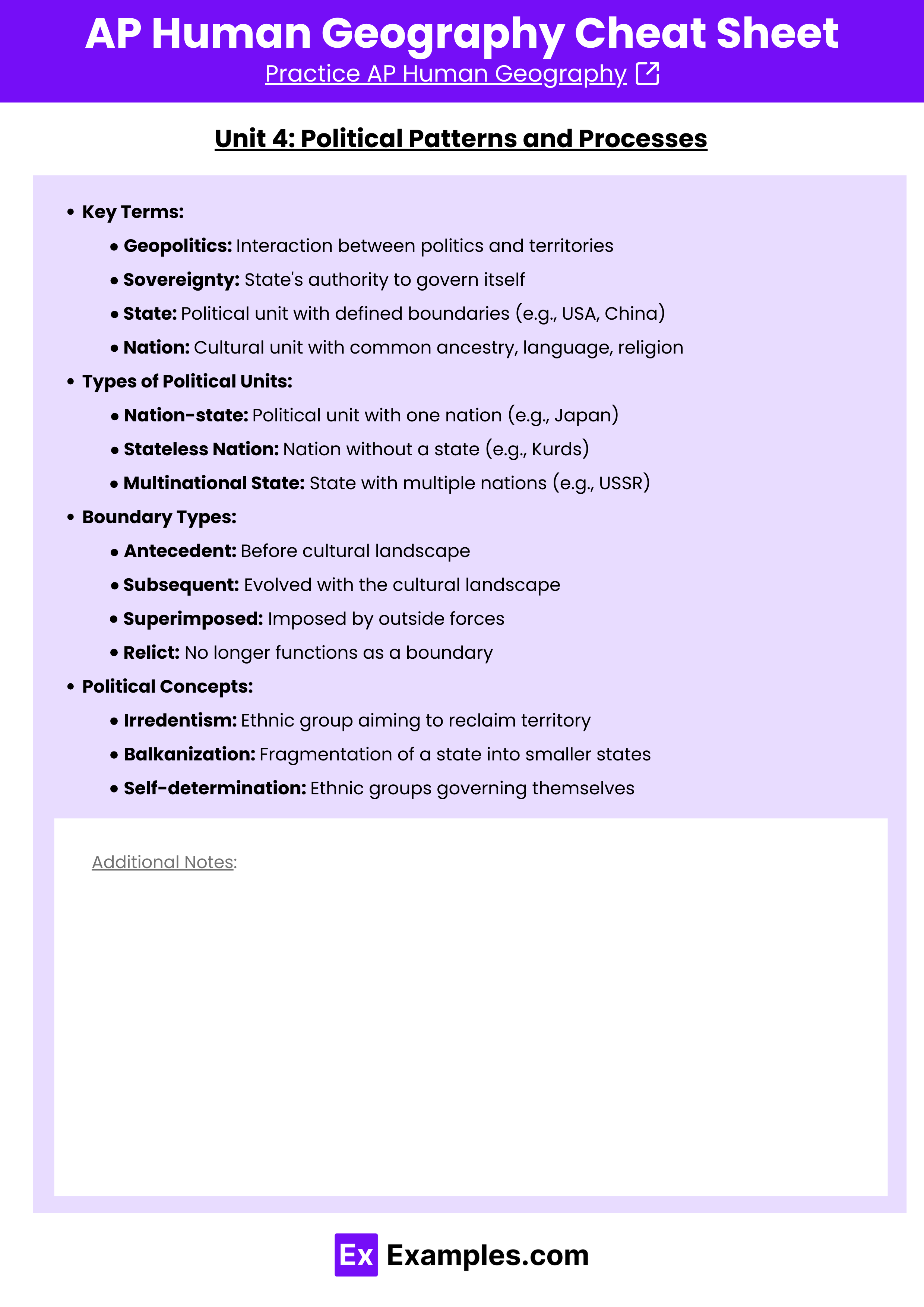
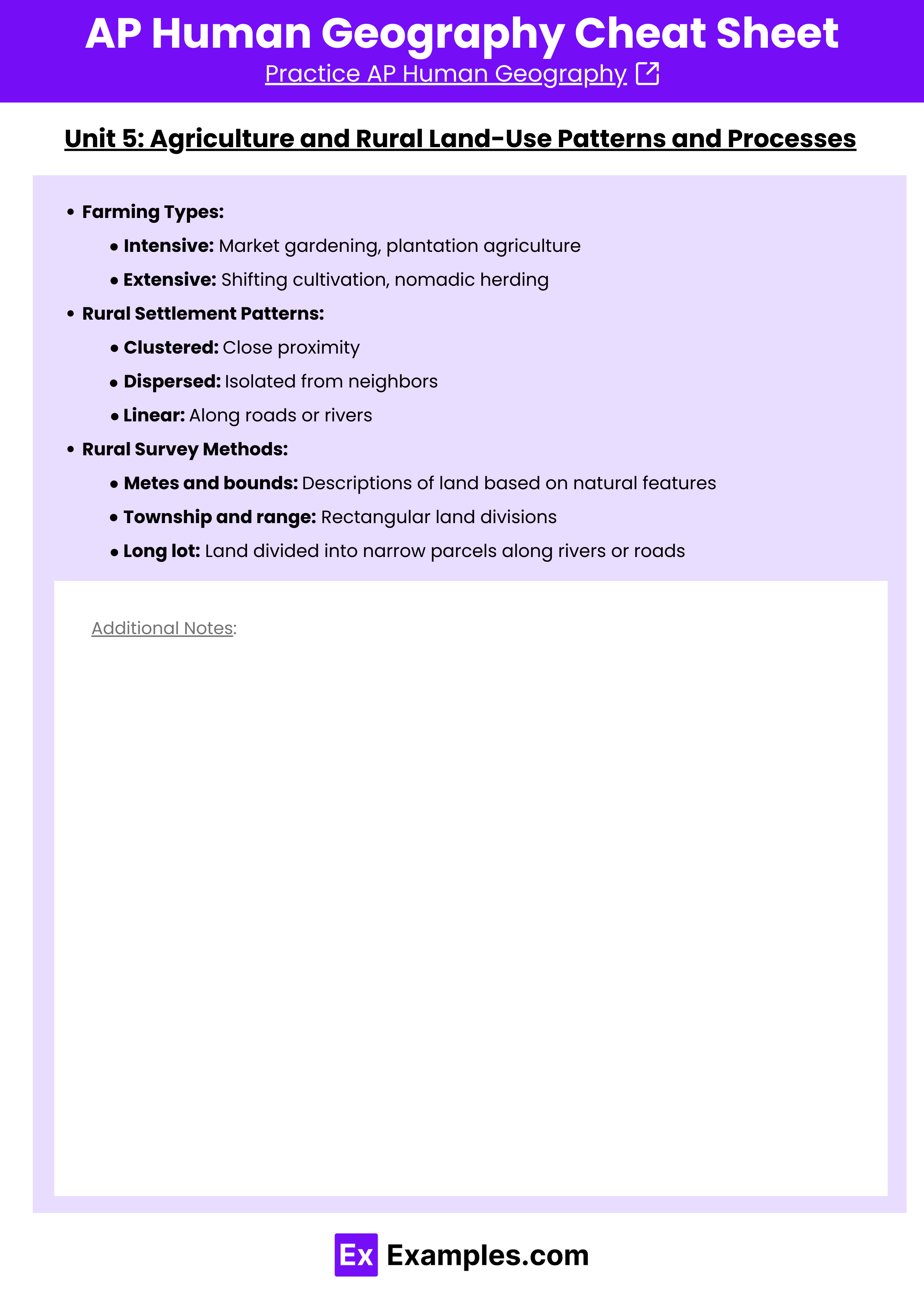
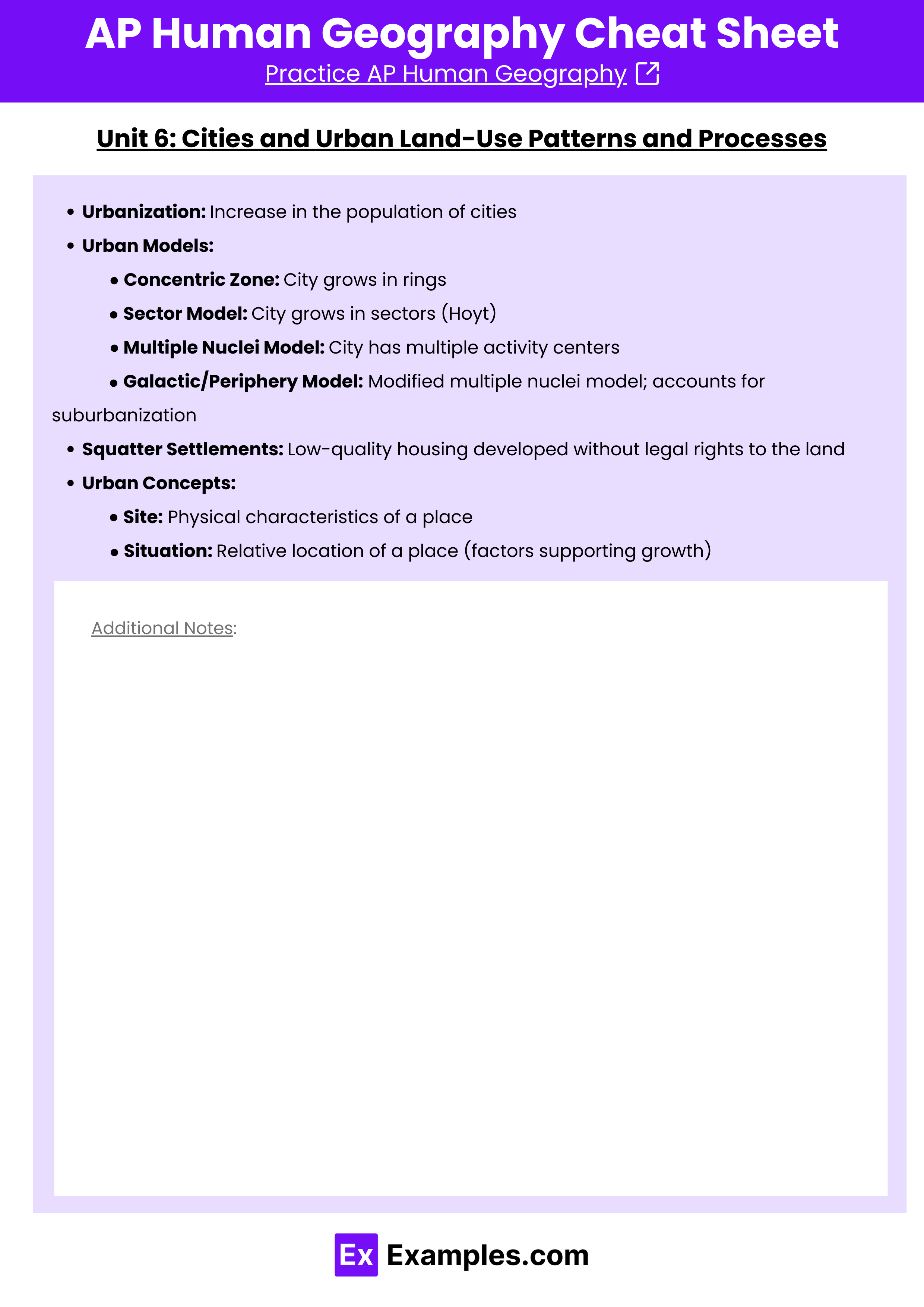
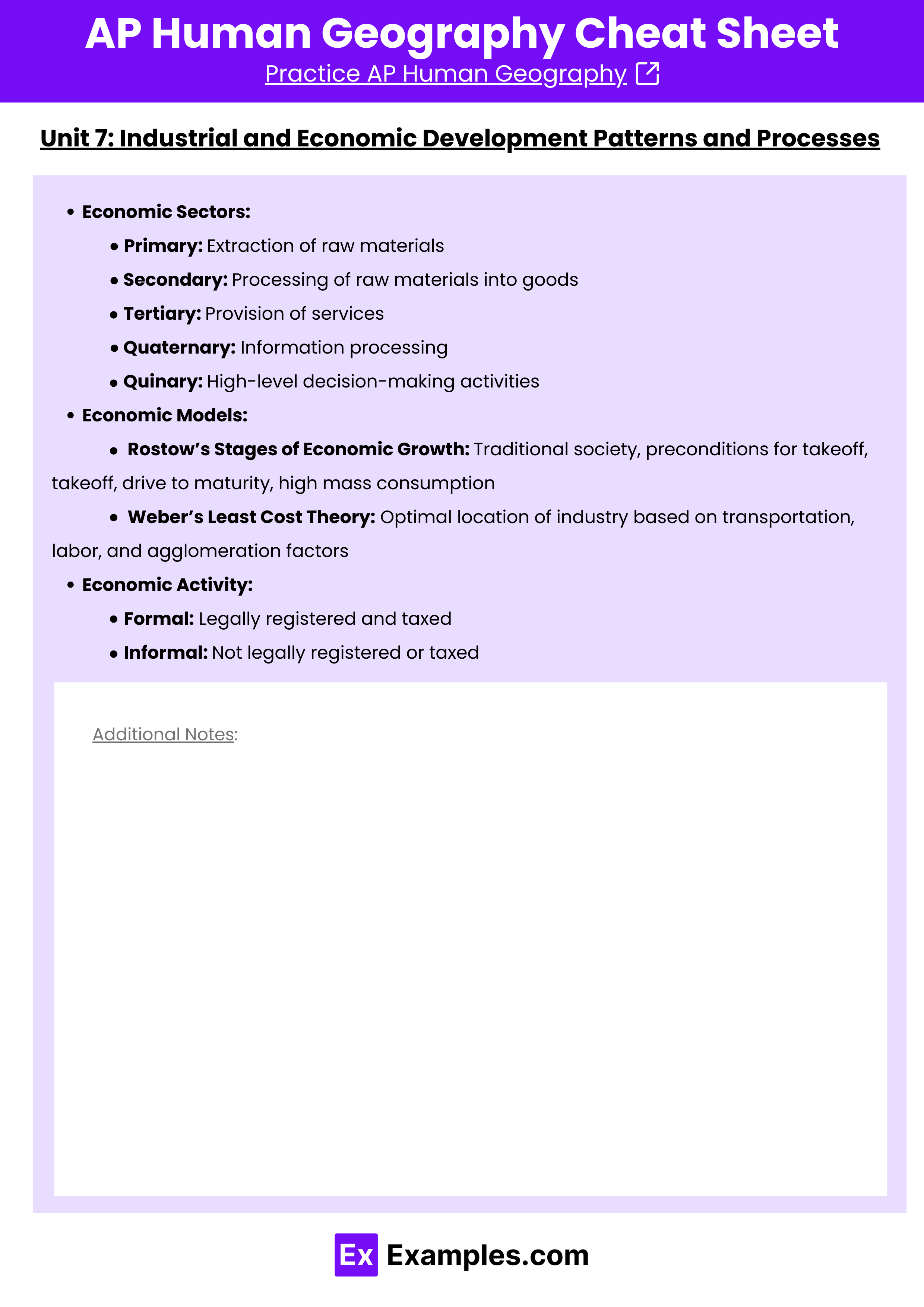
Download AP Human Geography Cheat sheet – Pdf
Unit 1: Thinking Geographically
5 Themes of Geography:
- Location: Absolute (latitude, longitude)
- Place: Physical and human characteristics of a place
- Human-environment interaction: How people interact with the environment
- Movement: Mobility of people, goods, and ideas across places
- Regions: Areas distinctive from one another
Types of Geography:
- Modern (science)
- Human (culture)
- Physical (landforms/vegetation)
Map Types:
- Isoline: Lines of equal value (e.g., temperature, pressure)
- Choropleth: Color shows information
- Proportional Symbol: Size correlates to intensity
- Dot: Each dot represents a specific value
Types of Sensing:
- Remote Sensing
- GPS (Global Positioning System)
- GIS (Geographical Information Science)
Unit 2: Population and Migration Patterns and Processes
Population Models:
- Population Pyramids: Show the % of males and females by age group
- Demographic Transition Model (DTM): Shows transition from high birth and death rates to lower rates as a country develops
- Epidemiologic Transition Model: Shows the cause of death at each stage of DTM
Ravenstein’s Laws of Migration: Ten rules explaining migration patterns
Malthusian Theory of Population Growth: Human population grows faster than the food supply
Key Characteristics:
- Crude birth rate, crude death rate
- Immigration (in), emigration (out)
- Epidemic, endemic, feticide (killing a fetus), infanticide (killing an infant)
Types of Density:
- Arithmetic (# of objects)
- Physiological (# of people)
- Agricultural (# of farmers)
Unit 3: Cultural Patterns and Processes
Types of Culture:
- Folk: Traditions, dress modes
- Popular: Trends in diet, music, and food
- Local: Customs and traits of a community
- Material: Art, sports, dance
- Non-material: Beliefs, practices, aesthetics
Cultural Concepts:
- Cultural Relativism: Understanding another culture on its own terms
- Ethnocentrism: Judging other cultures by the standards of your own
Religion:
- Universalizing Religions: Spread through expansion and relocation diffusion (e.g., Christianity, Islam)
- Ethnic Religions: Found near their hearth, spread through relocation diffusion (e.g., Hinduism, Judaism)
Cultural Processes:
- Acculturation: Adoption of traits from a dominant culture
- Assimilation: Replacement of weaker culture by a dominant one
- Syncretism: Blending of two cultures
- Multiculturalism: Coexistence of multiple cultures in one area
Unit 4: Political Patterns and Processes
Key Terms:
- Geopolitics: Interaction between politics and territories
- Sovereignty: State’s authority to govern itself
- State: Political unit with defined boundaries (e.g., USA, China)
- Nation: Cultural unit with common ancestry, language, religion
Types of Political Units:
- Nation-state: Political unit with one nation (e.g., Japan)
- Stateless Nation: Nation without a state (e.g., Kurds)
- Multinational State: State with multiple nations (e.g., USSR)
Boundary Types:
- Antecedent: Before cultural landscape
- Subsequent: Evolved with the cultural landscape
- Superimposed: Imposed by outside forces
- Relict: No longer functions as a boundary
Political Concepts:
- Irredentism: Ethnic group aiming to reclaim territory
- Balkanization: Fragmentation of a state into smaller states
- Self-determination: Ethnic groups governing themselves
Unit 5: Agriculture and Rural Land-Use Patterns and Processes
Farming Types:
- Intensive: Market gardening, plantation agriculture
- Extensive: Shifting cultivation, nomadic herding
Rural Settlement Patterns:
- Clustered: Close proximity
- Dispersed: Isolated from neighbors
- Linear: Along roads or rivers
Rural Survey Methods:
- Metes and bounds: Descriptions of land based on natural features
- Township and range: Rectangular land divisions
- Long lot: Land divided into narrow parcels along rivers or roads
Unit 6: Cities and Urban Land-Use Patterns and Processes
Urbanization: Increase in the population of cities
Urban Models:
- Concentric Zone: City grows in rings
- Sector Model: City grows in sectors (Hoyt)
- Multiple Nuclei Model: City has multiple activity centers
- Galactic/Periphery Model: Modified multiple nuclei model; accounts for suburbanization
Squatter Settlements: Low-quality housing developed without legal rights to the land
Urban Concepts:
- Site: Physical characteristics of a place
- Situation: Relative location of a place (factors supporting growth)
Unit 7: Industrial and Economic Development Patterns and Processes
- Economic Sectors:
- Primary: Extraction of raw materials
- Secondary: Processing of raw materials into goods
- Tertiary: Provision of services
- Quaternary: Information processing
- Quinary: High-level decision-making activities
- Economic Models:
- Rostow’s Stages of Economic Growth: Traditional society, preconditions for takeoff, takeoff, drive to maturity, high mass consumption
- Weber’s Least Cost Theory: Optimal location of industry based on transportation, labor, and agglomeration factors
- Economic Activity:
- Formal: Legally registered and taxed
- Informal: Not legally registered or taxed

